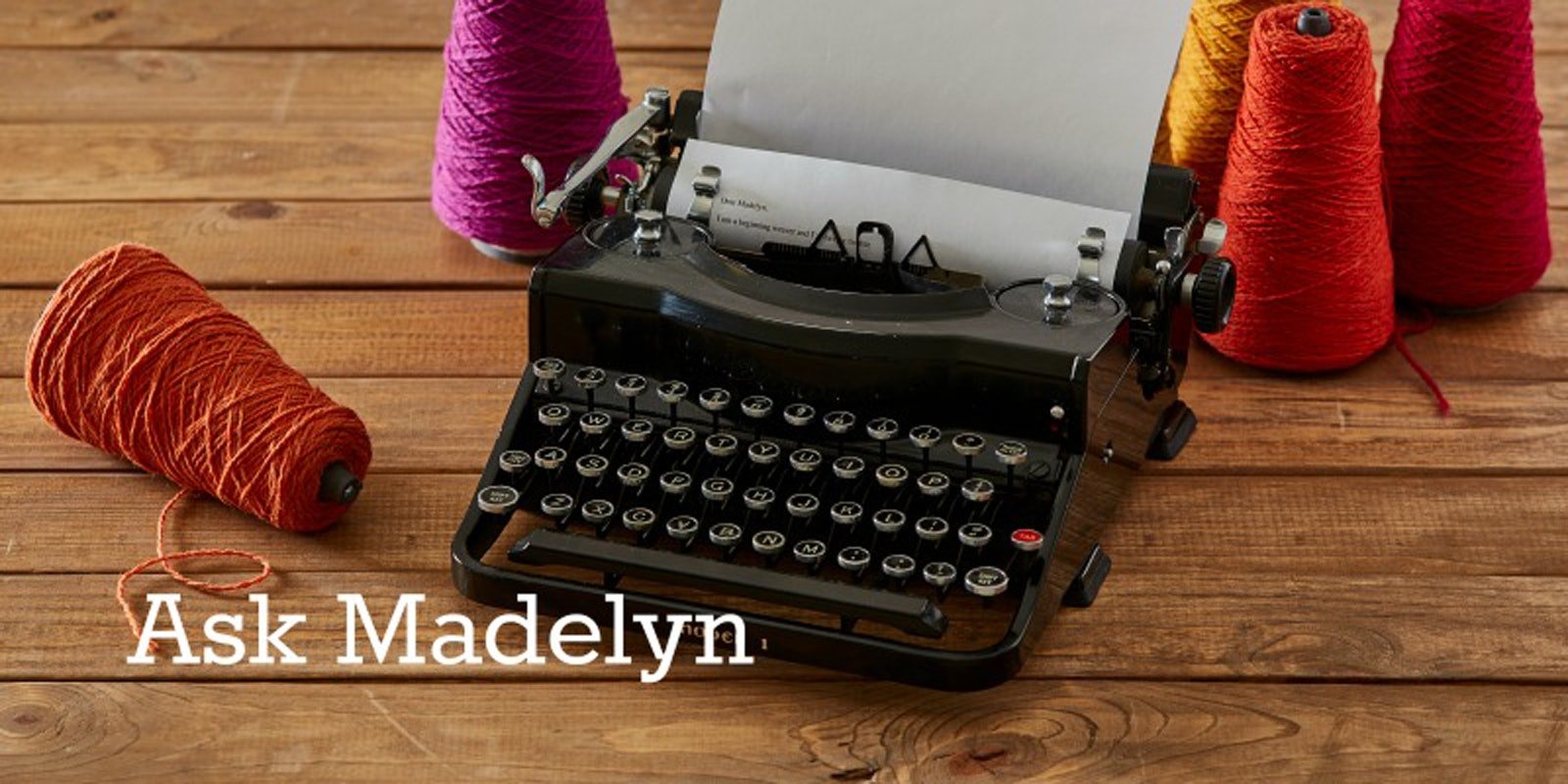QUESTION 1: I have received some natural 60/2 silk yarn. I am wondering if I could use the silk as a warp and use 20/2 wool as the weft. I also have some 14/2 80% alpaca/20% silk that I could use as weft. I thought I would do a huck pattern. I know I should sample, but I hesitate to waste these beautiful yarns. —Marina
QUESTION 2: I would like to convert a pattern for a table runner from a 20/2 thread to a 10/2 thread but know I can't substitute one for the other in an overshot. How do I do the math? —Mary Ellen
QUESTION 3: I have fibers left from my macramé days. Is there some way to use these in weaving and what weave would best used with them? I believe most are nylon and jute. Any suggestions would be appreciated. —Janice
Hi Ladies!
I grouped these three questions together because they all involve the same kind of reasoning and knowledge on designing around yarn. The first important step to take is to download the Master Yarn Chart. The chart lists all the yarns that have been used in Handwoven with actual-size photos (you can place your yarn next to the photo for a quick assessment of relative thickness).
With each yarn in the yarn chart, there are three numbers that indicate the appropriate sett. The one to pay attention to is the center number. That is the sett for that yarn used for both warp and weft in a balanced plain weave. To substitute a yarn, you need to know this number and the weave structure you are going to use with the yarn.
Huck, for example, is a balanced plain weave patterned with spots (floats). The sett to use for huck is, therefore, the sett for a balanced plain weave, which for 60/2 silk is 45 epi/ppi. The sett for a balanced plain weave in 20/2 wool, is 24 epi/ppi. The patterning created by huck works best if both weft and warp yarns are the same fiber and color. So, for Marina's question about using her three yarns, I would weave three separate scarves, each with the same yarn in both warp and weft.
In the case of transferring a table runner from 20/2 to 10/2 cotton in overshot as in Mary Ellen's question, the balanced plain-weave setts are 36 epi (20/2) and 24 epi (10/2) respectively. The ground cloth of an overshot is balanced plain weave, so you'll need to change the sett to 24 epi for 10/2 cotton. This will mean redoing the threading draft by eliminating some threads if you want the runner to be the same width as the original. You don't mention the pattern weft, which is usually two to three times heavier than the ground weft. In the case of a 10/2 cotton ground cloth, this could be 5/2 cotton, 3/2 cotton, or a 7/2–8/2 wool.
For the jute/nylon macrame fibers in Janice's question, hold the yarns next to similar yarns on the Master Yarn Chart to determine setts for plain weave. The resulting cloth will be quite heavy since the yarn is thick and firm, so you might not come up with a perfect project idea for it. These yarns might make a good warp for a weft-faced rug, however.
For weft-faced weave structures, the warp will be sett farther apart than for a balanced plain weave; for warp-faced weaves, the warp will be sett much closer. For twills, the warp (as well as the weft) is also sett closer than for plain weave because there are fewer interlacements per inch. Setts for these structures will depend on the specific threading and treadling drafts and the yarns themselves if warp yarns and weft yarns are different from each other.
—Madelyn
Posted January 8, 2014. Updated January 21, 2019.
If you have a weaving question please email Madelyn! View related & recent "Ask Madelyn" posts!

